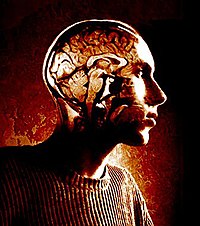Introduction to Psychology 1/IPSY103/Basics of evolutionary theory
Basics of evolutionary theory
Evolution simply means change over time. Many think of evolution as the development of traits and behaviors that allow us to survive this “dog-eat-dog” world, like strong leg muscles to run fast, or fists to punch and defend ourselves. However, physical survival is only important if it eventually contributes to successful reproduction. That is, even if you live to be a 100-year-old, if you fail to mate and produce children, your genes will die with your body. Thus, reproductive success, not survival success, is the engine of evolution by natural selection. Every mating success by one person means the loss of a mating opportunity for another. Yet every living human being is an evolutionary success story. Each of us is descended from a long and unbroken line of ancestors who triumphed over others in the struggle to survive (at least long enough to mate) and reproduce. However, in order for our genes to endure over time—to survive harsh climates, to defeat predators—we have inherited adaptive, psychological processes designed to ensure success.
At the broadest level, we can think of organisms, including humans, as having two large classes of adaptations—or traits and behaviors that evolved over time to increase our reproductive success. The first class of adaptations are called survival adaptations: mechanisms that helped our ancestors handle the “hostile forces of nature.” For example, in order to survive very hot temperatures, we developed sweat glands to cool ourselves. In order to survive very cold temperatures, we developed shivering mechanisms (the speedy contraction and expansion of muscles to produce warmth). Other examples of survival adaptations include developing a craving for fats and sugars, encouraging us to seek out particular foods rich in fats and sugars that keep us going longer during food shortages. Some threats, such as snakes, spiders, darkness, heights, and strangers, often produce fear in us, which encourages us to avoid them and thereby stay safe. These are also examples of survival adaptations. However, all of these adaptations are for physical survival, whereas the second class of adaptations are for reproduction, and help us compete for mates. These adaptations are described in an evolutionary theory proposed by Charles Darwin, called sexual selection theory.


